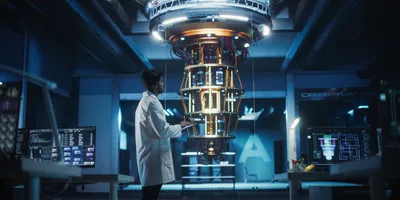The US Department of Energy (DOE) will invest $625 million to renew its five National Quantum Information Science Research Centers, advancing American leadership in quantum computing, sensing, and networking.
The centers—originally created under the National Quantum Initiative Act of 2018—unite experts across national laboratories, universities, and industry to accelerate discoveries and transform early-stage research into deployable technologies.
“Breakthroughs in QIS have the potential to revolutionize the ways we sense, communicate, and compute, sparking entirely new technologies and industries,” said Darío Gil, DOE under secretary for science. “The renewal of DOE’s National Quantum Information Science Research Centers will empower America to secure our advantage in pioneering the next generation of scientific and engineering advancements needed for this technology.”
Five national laboratories drive next-generation quantum R&D
Each National Quantum Information Science Research Center (NQISRC) contributes distinct capabilities that advance DOE priorities in energy, security, and scientific innovation:
- Co-design Center for Quantum Advantage (C2QA): Brookhaven National Laboratory will refine materials for superconducting and diamond-based quantum devices and develop modular systems for computing and sensing
- Superconducting Quantum Materials and Systems Center (SQMS): Fermi National Accelerator Laboratory will scale superconducting devices, create new refrigeration methods, and explore technologies for quantum data centers
- Q-NEXT: Argonne National Laboratory will integrate chip-level quantum operations, preserve entanglement across networks, and prototype next-generation quantum sensors
- Quantum Systems Accelerator (QSA): Lawrence Berkeley National Laboratory will enhance error correction for large-scale quantum computers using neutral-atom, ion, and superconducting circuits
- Quantum Science Center (QSC): Oak Ridge National Laboratory will develop open-source software linking quantum and classical computing to accelerate multidisciplinary research
DOE funding will extend for five years, beginning with $125 million in fiscal year 2025, contingent on congressional appropriations.
Why this matters for laboratory managers
This renewed investment signals continued federal confidence in the US quantum ecosystem—an area increasingly relevant to laboratories focused on materials science, cryogenics, and advanced computing.
For lab managers, the initiative highlights several operational opportunities:
- Cross-disciplinary collaboration: Partnerships between physics, chemistry, and computer-science teams will expand, requiring strong coordination and shared infrastructure
- Workforce development: DOE-funded centers often launch training programs for early-career scientists and technicians in quantum systems and cryogenic engineering
- Technology adoption: Facilities supporting DOE projects may gain early access to emerging hardware, software, and instrumentation for quantum research
As the federal government continues to scale quantum initiatives, laboratory leaders who align their research capabilities with DOE priorities will be better positioned for funding and collaboration opportunities.
This article was created with the assistance of Generative AI and has undergone editorial review before publishing.












